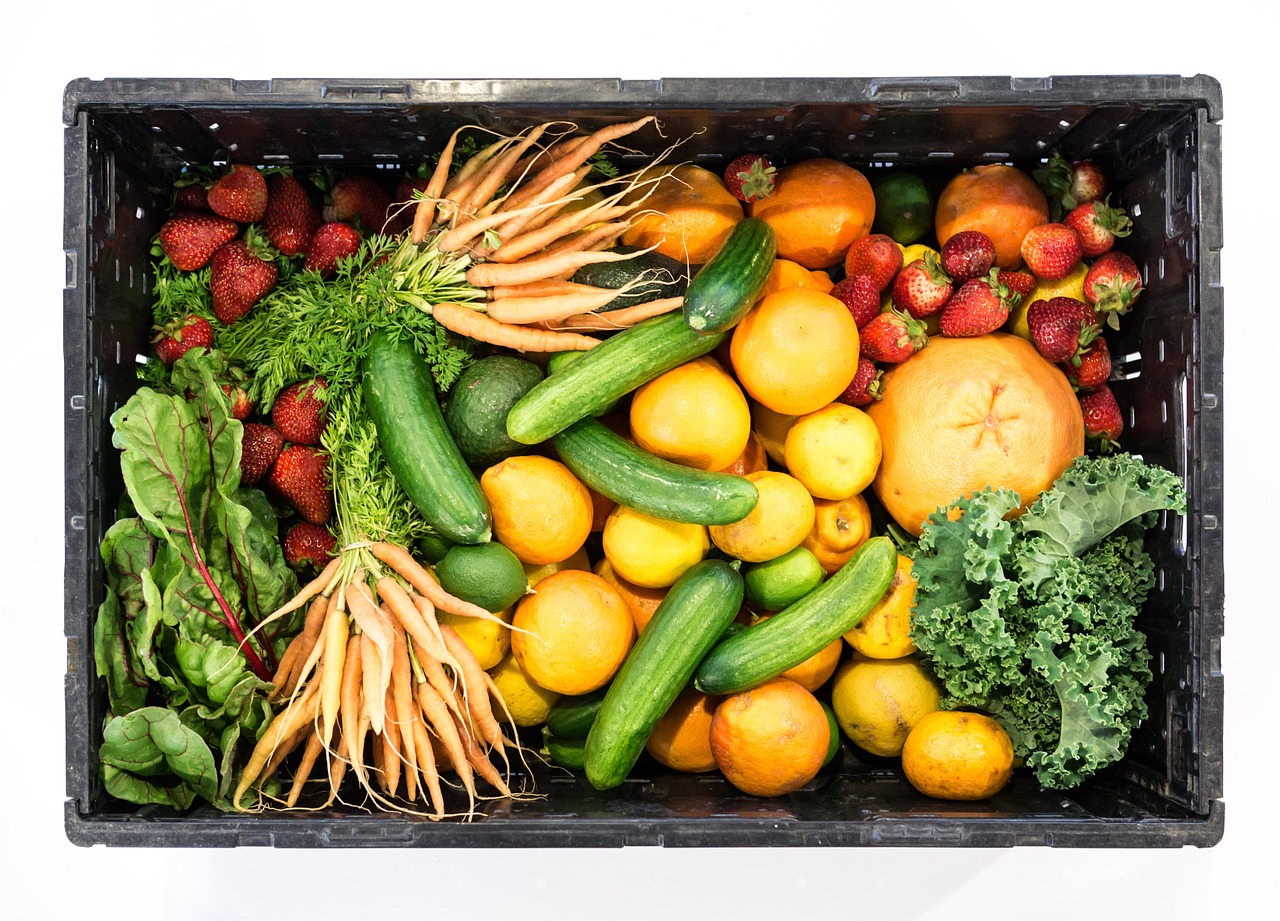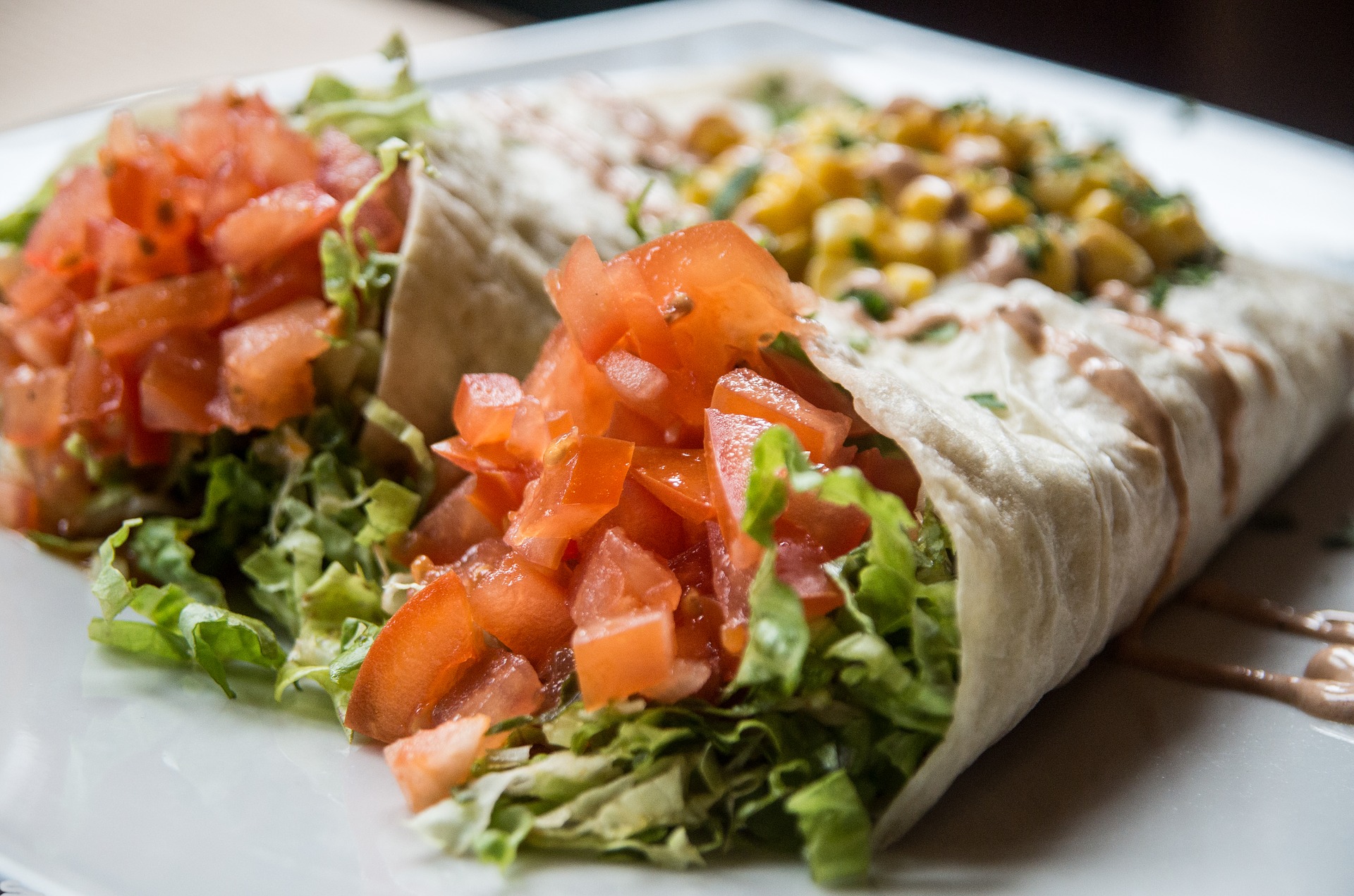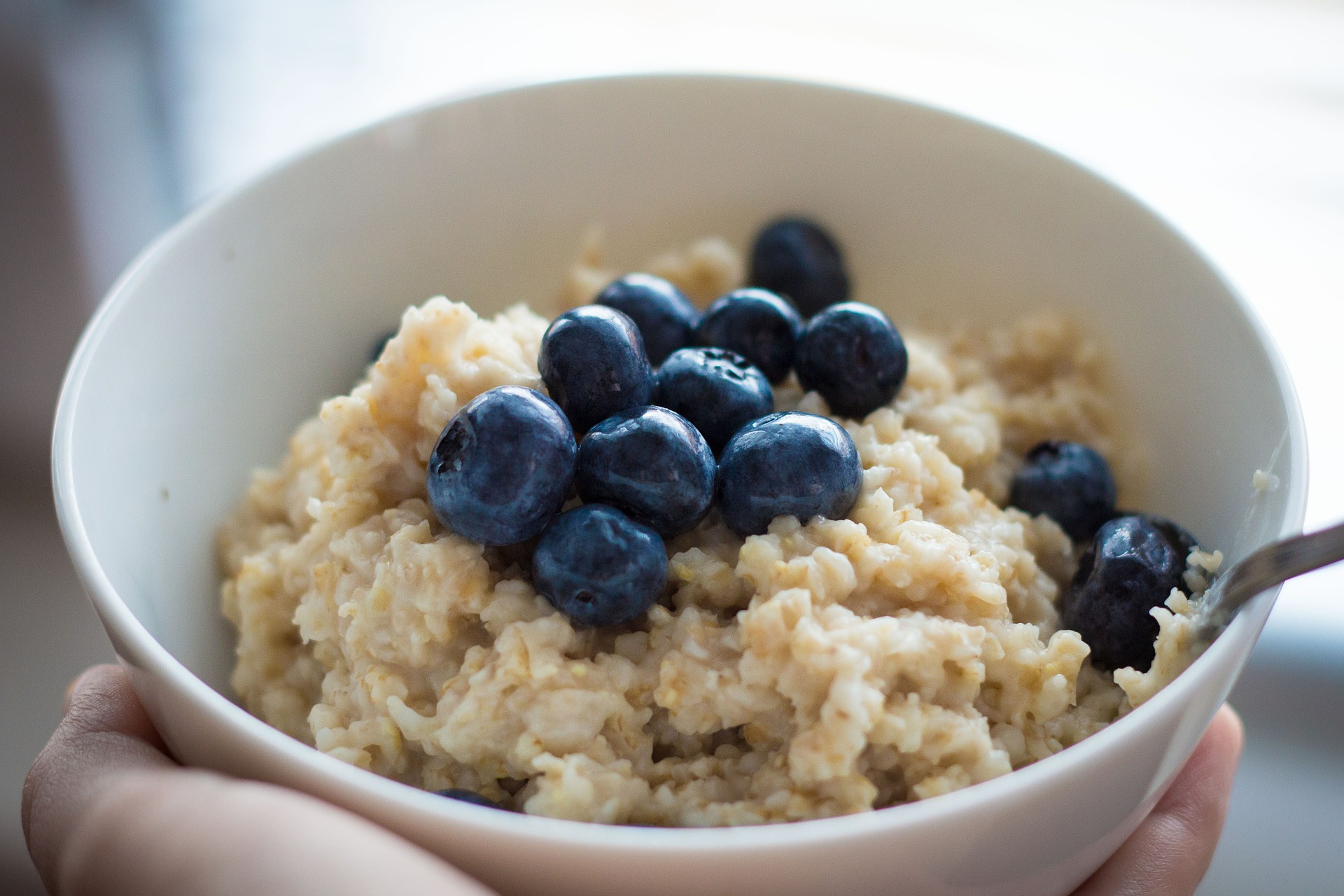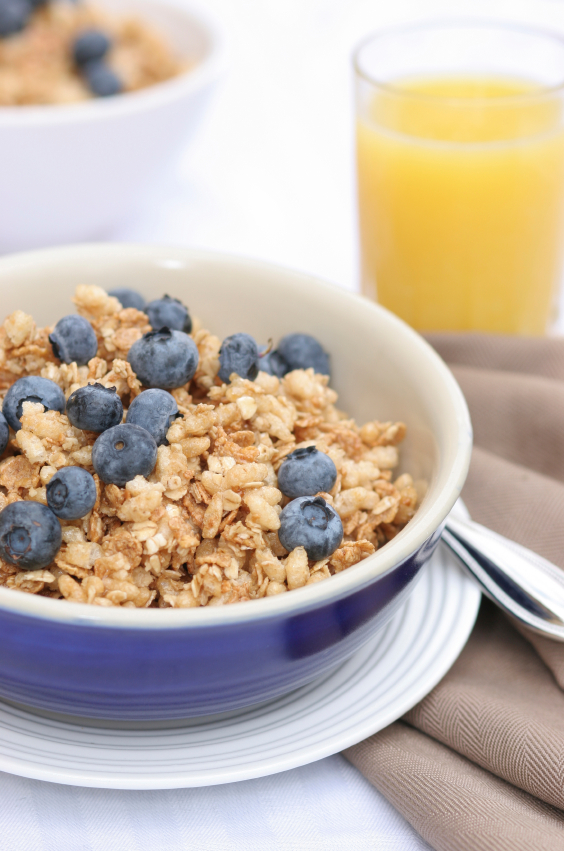Author: Anna Frinzi
What is the DASH Diet?
D.A.S.H. stands for dietary approaches to stop hypertension and is an approach to eating that helps prevent or reduce the risk of high blood pressure. The DASH diet is viewed as an overall heart-healthy eating plan that is most beneficial when combined with other healthy lifestyle changes like physical activity, limiting alcohol intake, managing stress, eliminating smoking, and adequate sleep.
DASH is not a restrictive way of eating, but is more flexible with a focus on consuming foods such as fruits, vegetables, fat-free or low-fat dairy products, whole grains, fish, poultry, beans, seeds, and nuts. This diet encourages a lower sodium intake along with a lower intake of sweets, added sugars, fats, red meats, and any foods high in saturated or trans fat. Consuming these nutritious foods can help lower blood pressure and promote an overall heart healthy lifestyle.

Finding the right DASH Diet for you
As some weight loss programs can be extremely restrictive, the DASH diet provides daily and weekly serving amounts for each food group that help meet a 2000 calories-per-day budget. Note that this calorie budget may not be doable for everyone, as your needs depend on many individual factors such as activity level, weight loss goals, sex, age, etc. (Trying to determine your own unique calorie budget. Talk to a goal specialist at Noom to discover how.)
There are two different DASH diets that can be followed and it is up to you to determine which is a better fit to help lower your blood pressure. You can choose between the standard DASH diet, which allows a maximum of 2300 milligrams of sodium per day, and the lower-sodium DASH diet, which recommends 1500 milligrams of sodium as the maximum intake. Check the nutritional label on food items to see how much sodium they contain per serving size.
When considering these two options, it may be helpful to consult with your doctor to see what is right for you. A typical American style of eating includes a high amount of salt, so either of these diets is intended to lower your sodium intake and improve blood pressure.

Following the 2000 Calorie A Day DASH Diet
With the recommended 2000 calories consumption each day, the DASH diet lays out specific guidelines to follow with each food group.
Grains: 6-8 servings per day
Grains include bread, rice, cereal and pasta. It is recommended to choose whole grains as these offer more fiber and nutrients than refined grains. Some examples to try in this category are whole-wheat bread and pasta, pita bread, brown rice, and oatmeal. Examples of one serving of grains is 1 slice of bread, 1 oz dry cereal, and ½ cup cooked rice or pasta.
Meats, poultry, and fish: 6 or less servings per day
Meat is a rich source of protein and magnesium. It is advised to trim away the extra skin and fat when preparing meat. Baking, broiling, grilling, or roasting is recommended instead of frying in fat. When choosing meat, fish is an ideal choice particularly salmon, herring and tuna as these are an excellent source of omega-3 fatty acids, which is beneficial for your heart and reducing blood pressure. Examples of one serving of meat includes one egg or one ounce of cooked meat, poultry, or fish.

Vegetables: 4-5 servings per day
Vegetables are sources of potassium, magnesium, and fiber. Adding in a variety to get those nutrients is advised. Some vegetables to add in to your diet include: broccoli, carrots, collards, green beans, green peas, kale, lima beans, spinach, squash, and sweet potatoes. Get creative and experiment with some new vegetable recipes! Examples of one serving is 1 cup raw leafy vegetable, ½ cup cut-up raw or cooked vegetable, or ½ cup vegetable juice.
Fruit: 4-5 servings per day
Fruits are packed with fiber, potassium, and magnesium, and are typically low in fat. Some options to add include apricots, bananas, dates, oranges, grapefruit, melons, strawberries, and tangerines. Interestingly enough, peels of fruit are also a great source of healthy nutrients and fiber. If you choose to consume canned fruit or juice, it is recommended to not add sugar. One serving of fruit is 1 medium fruit, ¼ cup dried fruit, ½ cup fresh, fresh, or canned fruit, ½ cup fruit juice.

Dairy: 2-3 servings per day
The major key to choosing dairy products is selecting items that are low or fat-free. Dairy is typically a large source of fat – particularly saturated fats – so choosing these healthier options is beneficial. These low-fat dairy products are a great source of calcium and protein. When choosing cheeses, it is advised to limit your intake as even fat-free cheeses are high in sodium. Examples of one serving include 1 cup of skim milk or yogurt, 1.5 oz of cheese.
Nuts, seeds, and legumes: 4-5 servings per week
Nuts, seeds, and legumes are incredible sources of energy, magnesium, and protein. They also contain fiber and even phytochemicals, which are known to protect against cancers and heart disease (Mayo). With this food group, serving sizes should be moderated due to their higher caloric value. Nuts have healthy types of fat like monounsaturated fat and omega-3 fatty acids that are known to be beneficial for heart health. Examples of a serving size include ⅓ cup nuts, 2 tbsp peanut butter, 2 tbsp seeds, ½ cup cooked legumes.
Fats and oils: 2-3 servings a day
Fats and oils should be limited, as having too much fat in your body is harmful and increases the risk of high blood pressure. We do need some good fats, like monounsaturated fats, but it is important to avoid trans fat. Trans fat is found in most processed foods and should be avoided as much as possible. Be sure to check the nutrition label and choose options that are low in saturated fat. A typical serving size of fats and oils is 1 tsp soft margarine, 1 tsp vegetable oil, 1 tbsp mayonnaise, 2 tbsp salad dressing.

Sweets: 5 servings or fewer a week
Sweets are not completely restricted in the DASH diet, however they should be limited. If you decide to have sweets occasionally, be sure you choose those that are low in fat. Artificial sweeteners are a popular topic and should be moderated as well and are explained further in this educational Noom blog. Examples of one serving of sweets includes 1 tablespoon sugar, ½ cup sorbet, or 1 cup of lemonade.
Why is the DASH Diet Healthy?
The DASH diet has plentiful health benefits that have been proven by scientific studies. Most notably, there have been studies performed by the National Heart, Lung, and Blood Institute that compared different variations of this diet to a typical American eating pattern and found that the DASH diet lowers blood pressure and low-density lipoprotein cholesterol, which is bad cholesterol that increases the risk of hypertension.
Additionally, researchers performed a study that split up groups of people to follow different sodium intake maximums for the DASH diet. Each group showed reductions in hypertension and as expected, those who reduced sodium the most showed the highest improvement with reducing blood pressure. In general, reducing sodium is a positive change, as high salt intake increases your blood pressure and the risk of heart disease and stroke as warned by the Center for Disease Control and Prevention (CDC).
The DASH diet has also been linked to other health benefits such as reducing the risk of osteoporosis, cancer, heart disease, stroke, and diabetes due to its nutritious diet recommendations.
DASH Diet Recipe Ideas
To get started on the DASH diet, it can be helpful to try out some new recipes and consider how to incorporate these into your routine. As you consider this low sodium diet, it could be helpful to sign up for Noom for that additional support and motivation from a coach and the Noom community to achieve your weight loss goals and lower your blood pressure. Here are some healthy DASH diet recipes to kickstart this nutritious way of eating:
Wiki (Fast) Rice Recipe
Prep time: 10 minutes
Cook time: 15 minutes
Yields 4 servings, Serving Size: about 1 C rice and vegetables
Ingredients:
- 1 tbsp canola oil
- 1 tbsp fresh garlic, minced (about 3 cloves) (or 1 tsp dried)
- 1 tsp fresh ginger, minced (or ¼ dried)
- 1 tbsp scallions (green onions), rinsed and minced
- ½ C canned sliced water chestnuts, drained
- 2 C cooked mixed vegetables (or ½ bag frozen stir-fry vegetable mix)
- 1 tbsp lite soy sauce
- 1 tsp sesame oil
Directions:
- Heat canola oil in a large saute pan over medium heat. Add garlic, ginger, and scallions, and cook until fragrant, about 1 minute.
- Add water chestnuts, and continue to cook until they begin to soften, another 1-2 minutes.
- Add vegetables, and toss until heated through, about 2-3 minutes (or up to 5 minutes for frozen vegetables)
- Add rice, and continue to cook until hot, about 3-5 minutes.
- Add soy sauce and sesame oil. Toss well and serve.

Baked Red Snapper with Zesty Tomato Sauce Recipe
Prep Time: 10 minutes
Cook Time: 40 minutes
Yields: 4 servings Serving size: 3 oz fillet, 1 C sauce
Ingredients:
For fish:
- 12 oz fillets of red snapper or bass, cut into 4 portions (3 oz each)
- 1 tbsp olive oil
- ½ tsp salt
- ¼ tsp ground black pepper
For tomato sauce:
- 1 tbsp olive oil
- 1 red bell pepper, rinse and cut into ¼ inch sticks
- 1 green bell pepper, rinsed and cut into ¼ inch sticks
- 1 C canned no-salt-added diced tomatoes
- 2 C canned no-salt-added tomato sauce
- 1 tbsp fresh oregano, rinshed, dried, and chopped or 1 tsp dried
- 1 tbsp fresh basil rinsed, dried, and chopped (or 1 tsp dried)
- 1 tbsp fresh parsley, rinsed, dried, and chopped (or 1 tsp dried)
Directions
- Preheat oven to 350 degrees F. Rinse fish fillets in cold water. Pat dry with paper towels. Coat each fillet with olive oil and season with salt and pepper.
- Place fish fillets on a baking sheet and bake for 25-30 minutes or until fish is white and flakes easily with a fork in the thickest part (to a minimum internal temperature of 145 degrees F)
- For sauce, heat olive oil in a medium-sized saucepan
- Add bell peppers and cook gently until they are still firm, but tender, about 3-5 minutes.
- Add tomatoes and tomato sauce and bring to boil over high heat. Reduce heat and simmer for about 10-15 minutes or until tomatoes are soft. Add oregano, basil, and parsley, and simmer for another 2-3 minutes. Remove sauce from heat and set aside.
- When the fish is done, remove from the oven.
- Serve each 3 oz fillet with 1 cup of sauce.

Chicken and Celery Stir-Fry Recipe
Prep time: 20 minutes
Cook time: 20 minutes
Yields: 4 servings, 1 serving: 1 C chicken and vegetables
High-quality meds. Powerful psychology-based weight loss.
- Starting at $149/month
- Meds to your door in 7 days
- 100% online access to coaches and doctors
- Backed by Noom's award winning behavior change program
Medications require consultation and prescription by clinician through Noom platform. Not all customers will qualify for prescription. Compounded semaglutide is produced in an FDA-registered facility but not reviewed by the FDA for safety, efficacy or quality.

Ingredients:
- 1 tbsp peanut oil or vegetable oil
- 1 tbsp ginger, minced
- 1 tbsp garlic, minced (about 2-3 cloves)
- 1 tbsp fresh scallions (green onions), rinsed and minced
- 2 C celery, rinsed and sliced
- 1 C carrots, rinsed and peeled into very thin strips
- 1 tbsp cornstarch
- 1 C low-sodium chicken broth
- 2 tbsp rice vinegar
- 12 oz boneless, skinless chicken breast, cut into thin strips
- 1 tbsp lite soy sauce
- ½ tbsp sesame oil (optional)
- 1 tbsp sesame seeds, toasted (optional)
Directions
- Heat oil in a large wok or saute pan. Add ginger, garlic, and scallions, and stir briefly until cooked, but not brown, about 30 seconds to 1 minute.
- Add celery and carrots and continue to cook gently until celery begins to soften.
- In a bowl, mix cornstarch with chicken broth and add to the pan. Add rice vinegar and bring to a boil over high heat. Lower temperature to a gentle simmer.
- Add chicken and stir continually for 5-8 minutes.
- Add soy sauce, sesame oil (optional), and sesame seeds (optional), and mix gently.
- Serve 1 cup chicken stir-fry.

Consider which of these DASH diet recipes are doable for you. Or do your own research and find some fun, new recipes to try out as you embark on a healthy eating and weight loss journey that improves your blood pressure. Finding a plan that works for you is so important and Noom can be an amazing support as you get started on this low sodium diet and start making changes for good!





